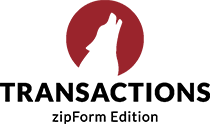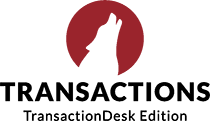
When we talk about data and insights here at Lone Wolf, we typically use a framework of four different stages. This framework lets us establish where a brokerage is in terms of visibility into data, and how effective it can be in helping them make decisions.
Stage 1: Intuition
Usually indicating a heavy reliance on gut instinct, this stage uses very little (if any) concrete, quantitative data.
This is a broker’s most valuable asset starting out—because without solid data, the experiences you’ve had are your best context for smart business decisions.
Stage 2: Reports
This stage, which is where most of the real estate industry pumps the brakes when it comes to data, relies heavily on the proverbial report card.
It uses descriptive statistics to explain what has already happened in the brokerage, and expects the reader to extrapolate from there to identify future trends.
It also relies on the reader’s ability to interpret numbers on a page or in an Excel file—not every business leader’s strength.
Stage 3: Dashboards
Growing in popularity in the real estate industry, dashboards build on the information provided by reports to turn descriptive data into visualizations.
The main goal of this is to increase the legibility of data, so it’s easier to use—and easier to see how your brokerage is trending based on historical data.
Stage 4: Data science
This is the last stage of our framework, and in the past has typically required a brokerage to have access to a data scientist or analyst to make use of it. Data science involves both:
- Predictive insights, the ability to forecast what will happen in the future
- Prescriptive insights, the ability to understand what the options are to affect what happens in the future
Each of the four stages means additional value for the brokerage, without sacrificing the value from earlier stages. After all, even if you have data science solutions to help you, there will always be times when reports are more helpful—like when you’re doing regular financial reporting.
That said, we’ve heard time and time again from our customers and from industry experts that reports just don’t meet every need.
Strategic leaders need strategic insights, and they need those insights to take an active role in helping improve the overall business.
We heard you—and we have an answer.
We are in the age of data.
Today, our world is built on data—and how you use your brokerage’s data to improve your business will define your success. But you shouldn’t have to be a data scientist to unlock the value of your data.
That’s why we built a tool to make Stage 4 on our framework accessible to every brokerage—data science without having to be a data scientist.
Much like how the dashboard you use to envision trends will never replace the detailed reports you send your accountant when tax season rolls around, data science will never replace your broker’s intuition.
Instead, it backs up your gut feelings—and shows you where best to apply it to affect your brokerage and your overall profitability.
So here’s my question to you.
Where are you in terms of data maturity? Do you rely on gut instinct, or spend your days deciphering dashboards and reports? How will you evolve?
Let’s talk about how we can help.


